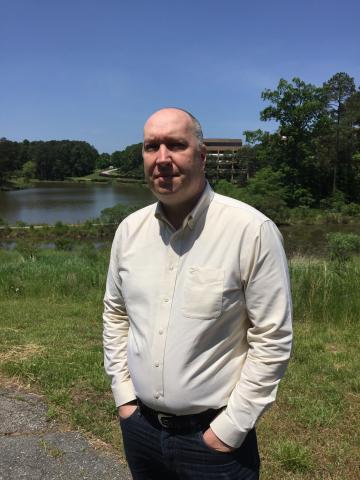John Hogenesch, Ph.D.
Professor of Pediatrics
Thomas F. Boat Chair
Divisions of Human Genetics, Immunobiology,and Pulmonary Medicine
Director, Center for Circadian Medicine
Cincinnati Children's Hospital Medical Center
President
Society for Research on Biological Rhythms
Seminar Information

The past several decades has seen an explosion of growth in mechanistic understanding of circadian clocks in several model organisms and in humans. However, translation of that knowledge into actionable medical interventions has been slow to non-existent. Here, I will discuss our efforts to develop circadian medicine in a pediatric hospital. I will talk about our recent progress in understanding the molecular output of the clock in the mouse and humans, including identifying new opportunities for circadian dosing time in improving drug action -- hypothesis-driven, mechanistic circadian medicine. I will talk about our efforts to test these hypotheses prospectively in model organisms and retrospectively in large clinical databases. Finally, I will discuss future opportunities and challenges.
Dr. Hogenesch is a Professor of Pediatrics, Genetics Chair in Systems Biology, and Interim Director of Human Genetics at Cincinnati Children's Hospital Medical Center. Dr. Hogenesch discovered of Bmal1, the master regulator of the mammalian clock, but also its paralog Bmal2, its partner Npas2, and the positive loop of the clock (Hogenesch et al., JBC, 1997; Hogenesch et al., PNAS, 1998; Hogenesch et al., J. Neurosci, 2000). Later, his lab characterized Rora/Rorb/Roc as key regulators of Bmal1 and circadian function (Sato et al., Neuron, 2004), discovered Chrono as a non-canonical repressor of Bmal1/Clock (Anafi et al., PLoS Biology, 2014), and Kpnb1 as a required transporter of the PER/CRY complex (Lee et al., Elife, 2015). The Hogenesch lab has led in research into the transcriptional outputs of the clock in animal models and humans (e.g. Panda et al., Cell, 2002, Hughes et al., PLoS Genetics, 2009, Zhang et al., PNAS, 2014; Anafi et al., PNAS, 2017; Ruben et al., Science Translational Medicine, 2018). This work is leading to a wealth of new opportunities in circadian medicine and has spurred community contributions, such as the public databases the Gene Atlas and Gene Wiki, CircaDB, and algorithms, including JTK, PSEA, MetaCycle, and CYCLOPS (Su et al., PNAS, 2004; Huss et al., NAR, 2010; Hughes et al., JBR, 2010; Pizarro et al., NAR, 2013; Zhang et al., JBR, 2014; and Wu et al., Bioinformatics, 2016; Anafi et al., PNAS, 2017).
Before moving to Cincinnati, Dr. Hogenesch was Professor and Vice Chair of Pharmacology at the University of Pennsylvania Perelman School of Medicine. He did his Ph.D. in Neuroscience at Northwestern University. Currently, Dr. Hogenesch is a Penn Fellow, sits or has sat on the Scientific Advisory Boards of Qiagen, Mimetics, Bio-Rad, the Ryan Licht Sang Foundation Medical Committee, and the Gene Ontology (GO) consortium, and is an advisor to several National Institutes of Health, NIDDK, NCI, NHLBI, and the Environmental Protection Agency (EPA).
